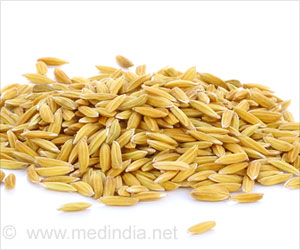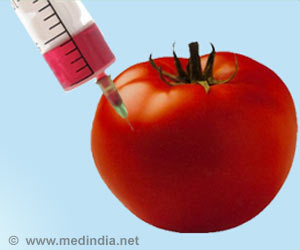Study shows how plants provide a steady flow of air to every cell. Humans have bred wheat plants to have fewer pores on their leaves and use less water.

‘Wheat plants have been bred by generations of people to have fewer pores on their leaves and fewer air channels, which makes their leaves more dense and allows them to be grown with less water.’





The new study, led by scientists at the University of Sheffield's Institute for Sustainable Food and published in Nature Communications, used genetic manipulation techniques to reveal that the more stomata a leaf has, the more airspace it forms. The channels act like bronchioles - the tiny passages that carry air to the exchange surfaces of human and animal lungs. In collaboration with colleagues at the University of Nottingham and Lancaster University, they showed that the movement of CO2 through the pores most likely determines the shape and scale of the air channel network.
The discovery marks a major step forward in our understanding of the internal structure of a leaf, and how the function of tissues can influence how they develop - which could have ramifications beyond plant biology, in fields such as evolutionary biology.
This new insight highlights the potential for scientists to make staple crops like wheat even more water-efficient by altering the internal structure of their leaves. This approach is being pioneered by other scientists at the Institute for Sustainable Food, who have developed climate-ready rice and wheat which can survive extreme drought conditions.
Professor Andrew Fleming from the Institute for Sustainable Food at the University of Sheffield said: "Until now, the way plants form their intricate patterns of air channels has remained surprisingly mysterious to plant scientists.
Advertisement
Dr Marjorie Lundgren, Leverhulme Early Career Fellow at Lancaster University, said: "Scientists have suspected for a long time that the development of stomata and the development of air spaces within a leaf are coordinated. However, we weren't really sure which drove the other. So this started as a 'what came first, the chicken or the egg?' question.
Advertisement
The X-ray imaging work was undertaken at the Hounsfield Facility at the University of Nottingham. The Director of the Facility, Professor Sacha Mooney, said: "Until recently the application of X-ray CT, or CAT scanning, in plant sciences has mainly been focused on visualising the hidden half of the plant - the roots - as they grow in soil.
"Working with our partners in Sheffield we have now developed the technique to visualise the cellular structure of a plant leaf in 3D - allowing us to see how the complex network of air spaces inside the leaf controls its behaviour. It's very exciting."
Source-Eurekalert









